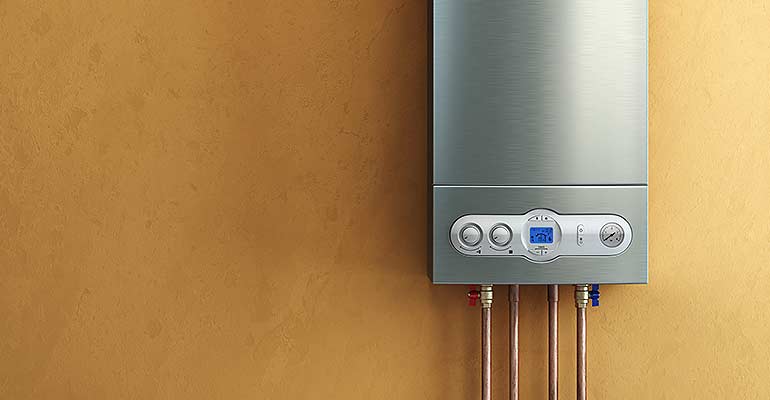Just how do you really feel on the subject of How to Maintain a Hot Water Heater in a Few Simple Steps?

Warm water is crucial for everyday convenience, whether it's for a rejuvenating shower or washing recipes. To guarantee your hot water system runs successfully and lasts much longer, regular upkeep is crucial. This short article provides sensible ideas and insights on just how to keep your home's hot water system to avoid disturbances and costly repairs.
Intro
Maintaining your home's hot water system may seem daunting, yet with a couple of easy steps, you can ensure it operates efficiently for several years to find. This guide covers whatever from recognizing your hot water system to do it yourself upkeep tips and recognizing when to hire professional aid.
Value of Maintaining Your Hot Water System
Normal maintenance not just extends the lifespan of your warm water system yet likewise guarantees it operates effectively. Neglecting maintenance can lead to decreased effectiveness, greater energy expenses, and also premature failure of the system.
Indications Your Warm Water System Needs Maintenance
Recognizing when your warm water system needs interest can avoid significant concerns. Look out for indications such as irregular water temperature level, unusual sounds from the heater, or rustic water.
Recognizing Your Warm Water System
Before diving into upkeep jobs, it's useful to recognize the basic components of your hot water system. Commonly, this includes the water heater itself, pipes, anode poles, and temperature level controls.
Monthly Maintenance Tasks
Routine regular monthly checks can aid capture small problems before they intensify.
Purging the Hot Water Heater
Purging your hot water heater removes sediment accumulation, enhancing performance and lengthening its life.
Monitoring and Changing Anode Rods
Anode poles prevent rust inside the storage tank. Checking and changing them when worn is critical.
Evaluating and Readjusting Temperature Level Settings
Adjusting the temperature settings ensures optimal efficiency and safety and security.
DIY Tips for Maintenance
You can carry out several maintenance jobs on your own to maintain your warm water system in leading problem.
Looking for Leaks
Frequently check pipes and connections for leaks, as these can bring about water damages and greater costs.
Checking Pressure Alleviation Valves
Evaluating the pressure relief valve ensures it functions properly and protects against excessive pressure accumulation.
Insulating Pipes
Shielding warm water pipes decreases heat loss and can conserve power.
When to Call a Specialist
While do it yourself maintenance is advantageous, some issues call for expert experience.
Facility Problems Requiring Specialist Assistance
Examples consist of major leakages, electrical troubles, or if your water heater is consistently underperforming.
Regular Expert Maintenance Conveniences
Specialist maintenance can consist of complete evaluations, tune-ups, and ensuring conformity with safety criteria.
Verdict
Routine upkeep of your home's hot water system is essential for performance, longevity, and price financial savings. By following these ideas and knowing when to look for professional aid, you can ensure a trusted supply of warm water without unexpected disturbances.
Water Heater Maintenance Tips
Test the TPR Valve
Shut off the power and the cold-water supply valve. Place a bucket under the pipe connected to the temperature-pressure-release (TPR) valve on the top or side of the tank. (This valve opens if the tank pressure gets too high.) Lift the valve’s tab to let some water out, then let go. If water keeps flowing, drain the tank partway, unscrew the old valve with a pipe wrench, and install a new one. Check the Anode Rod
Put a hose to the tank’s drain cock and let out a few gallons of water. Now fit a 1 1/16-inch socket onto the rod’s hex head on top of the heater (or under its top plate) and unscrew the rod. If it’s less than ½ inch thick or coated with calcium, buy a new one, wrap its threads with Teflon tape, put it back in the tank, and tighten securely. Use this segmented rod if headroom above the tank is limited. Drain the Tank and Wash Out Sediment
Drain the remaining water in the tank into the bucket, then stir up the sediment on the tank’s bottom by briefly opening the cold-water supply valve. Drain and repeat until clean water comes out of the hose. Close the drain cock, refill the tank, and turn its power back on. Adjust the Temperature
Find the temperature dial on the side of the tank and unscrew its cover. Adjust the dial to 120 degrees using a flathead screwdriver. For every 10 degrees the temperature is lowered, you can expect to save up to 5 percent in energy costs. Turn the water heater off or the thermostat down to its lowest setting if you plan to be away from home for more than three days. Insulate the Pipes
Buy some self-sticking 3/8-inch-thick foam pipe insulation that matches the pipes’ diameter. Slide the foam over the hot-and cold-water pipes as far as you can reach. Insulating the cold-water pipe prevents condensation in summer. Peel the tape and squeeze the insulation closed. If the pipe is 6 inches or less from the flue, cover it with 1-inch-thick unfaced fiberglass pipe wrap. https://www.thisoldhouse.com/plumbing/21016402/how-to-maintain-a-water-heater

I recently found that post about What Kind of Maintenance Do Water Heaters Need? while doing a lookup on the web. Are you aware of somebody else who is occupied with the subject? Feel free to promote it. Thank-you for taking the time to read it.
Make An Appointment